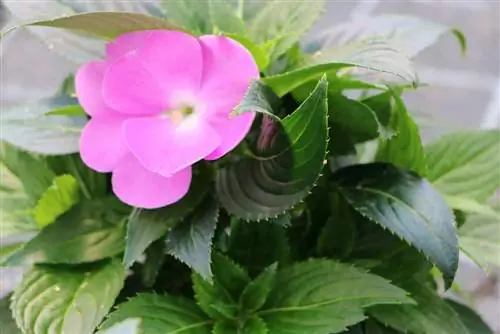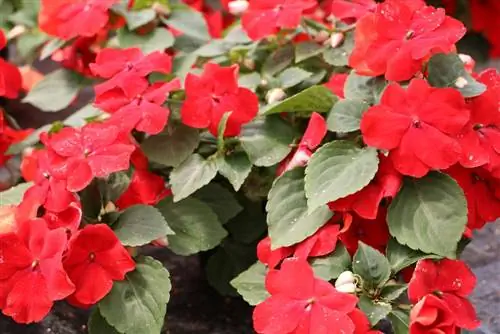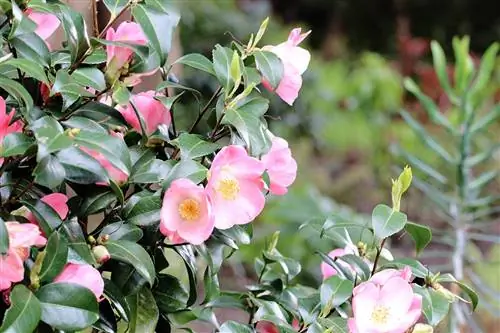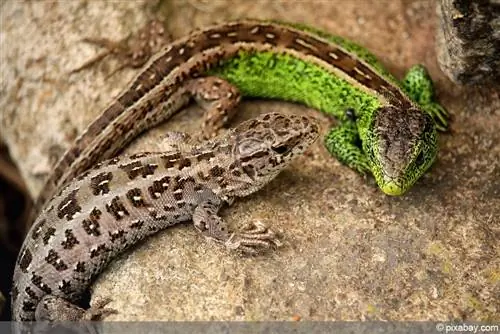- Author admin [email protected].
- Public 2023-12-17 03:39.
- Last modified 2025-01-24 12:45.
If you have a busy Lieschen in your garden, you have chosen one of the most popular garden and house plants. The plant, which actually always blooms, impresses with its colorful splendor and is easy to care for, especially as a year-round potted plant.
If you have the flowers in a bed in the garden or in front of the terrace, there are a few things you should pay attention to, especially when overwintering. The most important thing here is the correct location and care during the rest phase.
A busy Lieschen needs special care
You should bring the plant into the house as early as September, when the nights get cool. Temperatures below 10 degrees Celsius can damage the flower. At the same time as you move into your premises, you should also reduce watering and definitely stop fertilizing. Even if a busy Lieschen actually needs a lot of water, waterlogging in the pot should be avoided. It is recommended that you use a permeable flower pot, for example made of clay, where the water can drain away.
While an average temperature of up to 24 degrees Celsius is good for the flowers, you should moisten the leaves with spray water from this temperature onwards. Regular fertilization every fourteen days also pleases the hard-working Lieschen, who thanks her for this care with a true display of flowers.
Winter warm and bright
The phase in which you overwinter your busy Lizzie (Impatiens walleriana) lasts between September and April. Even if the plant gets through the cold season well in an average-temperature room, you do not need a special location or outstanding climatic conditions such as a certain level of humidity. Just make sure that the summer blooming miracle is in a bright room. Under no circumstances should you keep your busy Lieschen in the basement or in dark rooms through the winter.
After the winter rest, we recommend repotting the plant in general so that the growth and development of the flowers is better in new, permeable soil. If you want to use your Busy Lizzie again in the garden as a flower decoration, you should wait until an average temperature during the day, but especially at night, of 10 degrees Celsius before planting.
Offshoots can be grown during the wintering period
For your busy Lieschen that you have in the bed, extra effort is required when overwintering. But at the same time, this measure can be used to allow you to root offshoots and new shoots. Even though you can basically form offshoots of the plant at any time, September is ideal, as the young plants then have enough time to grow. Plus
- put the head cuttings individually in pots
- cover this with a plastic bag
- place in a bright location with morning or evening sun
- regular watering
You can discover fully formed roots after three to four weeks. You can then remove the hood from the pot and allow the young plants to overwinter normally. As soon as the cold season is over, the shoots should be robust and large enough to be planted out in the bed.
Annual plants can be perfectly overwintered
If you want to be amazed by the blooms of your Busy Lieschen regularly in the summer, you don't have to go to the gardener every year. Even though this plant is basically only an annual, it always manages to get it through the winter optimally. If you accept the additional care involved, you will have the wonderful plant with its almost continuous flowering in your home all year round and can enjoy the orange, red or white flowers. Hanging baskets in particular give your rooms an almost Mediterranean-like friendly atmosphere that is worth every effort.

The compact growth of the plant, which stands out due to its bushiness, does the rest so that you should tackle the overwintering of the busy Lieschen. Especially if you are a real garden lover and you care about plant care and individual design, you will not only save money by overwintering, but you will also be particularly happy when the busy Lizzie is blooming again in the garden and is the target of busy butterflies.
Summary: Overwintering of Busy Lieschen
It's not for nothing that the hard-working Lieschen is so popular in the garden, as a decorative plant on the terrace or in the living room - it actually always blooms. And it is precisely this flowering power that makes this colorful plant a year-round companion for plant lovers. If the plant is a year-round houseplant, overwintering is usually not a problem. But if the colorful flowering wonder grows in a bed in the garden, some preparatory work has to be done. The plant is particularly undemanding, especially in winter, if it is in the right location and receives the right care during its rest phase.
- As diligently as the Lieschen flowers, the care must be just as careful. The flower must be brought into the house from September onwards, as temperatures below 10°C can damage it. At this time, watering is also reduced and, above all, fertilization is stopped.
- Although this flowering plant requires a lot of water, it should never become waterlogged. A permeable flower pot that allows excess water to drain away is therefore particularly important for this plant.
- The plant is not fertilized during the winter from September to around April. It doesn't need a special location - it can stand on the flower bench in a bright room during the winter.
- The cellar is not suitable for overwintering this plant; the flower also does not feel comfortable in darker or cool rooms.
- After the winter rest, the plant is repotted and provided with new, permeable soil. The Lieschen should only be put outside again when the temperatures remain permanently below 10°C.
Since you can plant the hard-working Lieschen not only in pots, but also in beds, you cannot always overwinter this plant without additional work. For lizards that are in the bed, it can be easier to provide offshoots and re-root shoots than to transfer each plant to a flower pot and overwinter in the house.






